Acura RDX vs MDX: How Are the Crossovers Different? Which One is Right for You?

Acura has a two-pronged approach to the crossover market. But which one should you be eyeing?
The luxury arm at the House of Honda has been cranking out competitors for the likes of Lexus and Infiniti since the brand appeared on our shores about thirty years ago. Given the preferences of car shoppers in modern times, it should surprise exactly no one that today’s Acura has a lineup of crossovers and SUVs to suit a variety of needs and tastes.
Get a Quote on a New Acura RDX or MDXTwo of them, the RDX and MDX (Acura has long since binned fabulous real model names like Legend and Vigor), cover a swath of the market nearly as wide as the turnpikes they are designed to drive upon. The RDX is a two-row vehicle with sporting pretensions offered with a four-cylinder engine and all-wheel drive. The MDX is its bigger brother, capable of housing three rows of humans, with more power to match.
Which one is right for you? Let’s figure it out.
Acura RDX vs MDX
Style
Acura RDX: Always a subjective measure, your author believes the 2020 RDX to be a handsome machine, especially in A-Spec trim which comes in eye-popping colors and an available jazzy red interior. Its center stack is dominated by an enormous Drive Select button, a bold styling choice that evokes what is found in the NSX halo car. Twin sewer cannons poke through the rear bumper cover and a variety of wheel styles are available from which to choose.
SEE ALSO: Acura MDX Sport Hybrid Review
Acura MDX: Acura has finally got a bead on its angular exterior styling, and it pays off with the fourth-generation MDX. It’s not vastly different to the model that came before, but the multiple small styling tweaks really liven up the look. Thinner lighting elements and more sculpted sides give the MDX a stronger presence, especially in sportier A-Spec trim.
Bottom Line: Both cars are extroverted foils to some of the more staid and upright competition, a few of whom make watching paint dry a fun-filled adventure. You won’t lose either of these rigs in a crowded parking lot, especially if you select a good color like Performance Red or Apex Blue.
Space and Cargo Capacity
Acura RDX: Exactly 40.0 inches of headroom is available the RDX front row, with 38.0 inches of space afforded to those in the back seat. Legroom is a vast 42.0 inches up front, more than even the bigger corporate cousin Honda Pilot, demonstrating the RDX’s efficient packaging. The EPA pegs total passenger volume at 104 cubic feet.
Comparison shoppers should be aware of Acura’s, um, creative way of measuring interior space. Two sets of numbers are generally given, the larger of which includes space between seats and including any underfloor storage. Using this metric, the RDX has 31.1 cubic feet of cargo area behind its rear seat, 79.8 cubes with that row folded down and out of the way.
Acura MDX: Perhaps surprisingly, the larger MDX has slightly less headroom for front passengers than the RDX (38.5 inches), so make sure to take an extended test drive before signing on the dotted line. Middle- and third-row noggin space is on par with the RDX’s back seat. Legroom is about the same in the front and middle seating areas but falls to an elf-like 29.0 inches in the third row. Passenger volume is 132 cubic feet.
Every version of the Acura MDX offers the same amount of cargo space, regardless of the number of driven wheels. Behind the third row, and using the tricksy Honda measurements, owners will be able to pack 18.1 cubic feet of gear. Folding that seat opens things up to the tune of 48.4 cubes, while a cavernous 95.0 cubic feet of space stands at the ready if all seats behind the driver and front seat passenger are stowed.
Bottom Line: If hauling more than five people is a frequent task, the MDX will suit the task if those relegated to the third row are not of NBA stature. However, the smaller Acura isn’t exactly a pipsqueak, and the RDX may actually be the better choice for couples or families whose numbers do not exceed four. When it comes to cargo capacity however, the MDX is more commodious in every measure thanks to a larger footprint.
Powertrains and Fuel Economy
Acura RDX: No matter how much cheddar you splash out on an Acura RDX, one will find a turbocharged 2.0-liter four-cylinder engine under its hood making 272 horsepower and 280 lb-ft of torque. It is mated to a 10-speed automatic transmission with flappy paddles on the steering wheel adding a bit of zing to the morning commute. Power going to all four corners is optional, branded under the most excellent banner of Super Handling All-Wheel Drive.
SEE ALSO: Honda Pilot vs Acura MDX: Which SUV is Right for You?
Speaking of fuel, front-wheel drive versions of the 2020 RDX have earned a rating of 22 mpg in city driving. Most models should find themselves getting 28 mpg on the highway save for A-Spec trims which, thanks to different gearing, are dinged a 1 mpg penalty. Adding all-wheel drive reduces fuel economy by a further mpg across the board.
Acura MDX: With this latest version of the MDX, Acura has dropped the hybrid model. Most every model comes with the familial 3.5-liter V6 engine, spitting out 290 horsepower and 267 lb-ft of torque. The exception is the hotter Type S, which slots an Acura-exclusive 3.0-liter turbocharged V6 behind that diamond grille. Power is up to 355 hp, with a stout 354 lb-ft of torque. Both engines use the same 10-speed automatic transmission as found in the RDX.
Ignoring the Type S, front-wheel drive versions are rated by the EPA at 19 mpg in city driving and 26 mpg on the highway. Adding power to all four wheels subtracts a single mpg from the latter figure, but curiously not the city.
Bottom Line: It would appear that the vitamin-packed youth carries the day, producing nearly as much power as its larger and older sibling but in a smaller package. Both cars are recommended to swill premium 91 octane fuel.
The smaller of our two contenders handily wins the overall fuel economy race but both are surprisingly equal while cruising the open road.
Capability
Acura RDX: Ground clearance is surprisingly robust in the car-based RDX, measuring 8.2 inches in both front- and all-wheel drive examples. For comparison, this equals or exceeds most versions of the mighty Jeep Cherokee. Towing capacity is capped at just 1,500 lb. An approach angle of 17.2 degrees is nothing to write home about but its departure angle of 22.7 degrees will help keep you off that snowbank near the back of your parking lot.
SEE ALSO: 2019 Acura RDX Review
Acura MDX: All versions of the MDX make do with just 7.3 inches of ground clearance. Front-drive models can tow 3,500 lb, all-wheel drive whips are good for an even 5000 lb. MDX gives up quite a bit when it comes to approach and departure angles too, measuring just 14.9 and 17.4 degrees respectively. Take care when approaching those concrete parking lot dividers.
Bottom Line: Straight up, the small RDX is a better choice for customers who may find themselves trying to punch their way through a January snowstorm on their way to work or seeking to park their ride a bit closer to the shoreline on a summer’s day. The extra ground clearance will help, too.
Technology
Acura RDX: Packing in a wide variety of driver aids such as forward collision warning and a multi-view camera system, all but the most ardent gadget-philes will be happy with their RDX. Be sure to spec the tremendous Acura/ELS Studio 3D premium audio system, a piece of kit with no fewer that sixteen speakers (including four in the roof) and the ability to make you believe your favorite artist is performing right there on the dashboard.
ALSO SEE: Acura RDX Infotainment System: How the Heck Are You Supposed to Use It?
Acura MDX: All manner of safety nannies, such as lane keeping and adaptive cruise control, are standard on every 2020 MDX. Luxury appointments ranging from power seats with umpteen adjustments to tri-zone climate control coddle every passenger.
Bottom Line: Each machine brings an impressive level of tech to the party. The options lists are very similar, but the MDX just inches ahead thanks to the little niceties, like memory seating.
Pricing
Acura RDX: Starting under $40,000 for a front-wheel drive entry-level model, this year’s RDX allows customers to choose the $3,000 A-Spec trim without popping for the $2,000 all-wheel drive feature. A-Spec does require the addition of a $2,900 Tech package though, putting it suggested price at $45,325, including destination.
Acura MDX: For 2020, the MDX starts at $47,925, onto which one can add niceties like all-wheel drive and the snazzy A-Spec package. The former will set you back an extra $2,000 while the A-Spec, while listed at $3,500, also requires a $5,000 Tech package—sound familiar?—and the aforementioned all-wheel drive. Discounting the forthcoming Type S, the MDX tops out at $61,675 for the Advance Package.
Bottom Line: Given its extra functionality in terms of practical concerns like ground clearance, not to mention slightly more space for front-seat passengers, the cheaper RDX wins this round.
Verdict: Acura RDX vs MDX
In a case of the little brother showing up big bro at soccer practice, RDX—despite its smaller dimensions and lower price—arguably provides a better overall package for the money. It is also has better ground clearance, which everyone can appreciate on a snowy day. Unless you absolutely need to have that third row of seats in the MDX, the RDX is likely to satisfy while leaving a smaller hole in your wallet.
Become an AutoGuide insider. Get the latest from the automotive world first by subscribing to our newsletter here.

Living in rural Canada, Matthew has immersed himself in car culture for over 30 years and relishes the thought of a good road trip. A certified gearhead, he enjoys sharing his excitement about cars and is very pleased to contribute at AutoGuide. Matthew is a member of Automotive Journalists Association of Canada (AJAC).
More by Matthew Guy





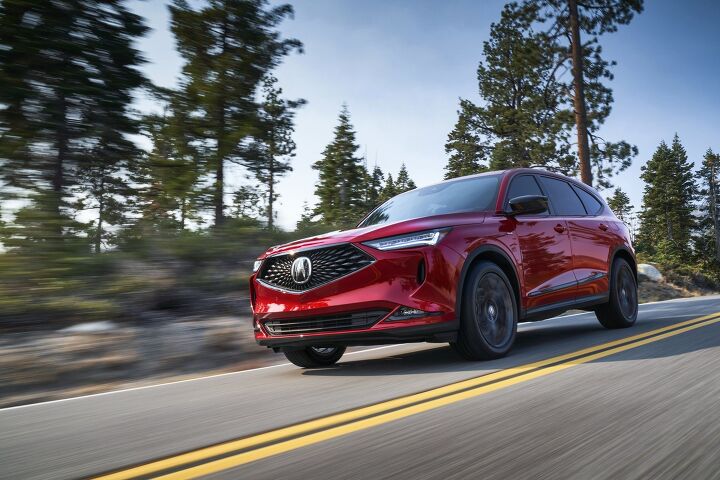






















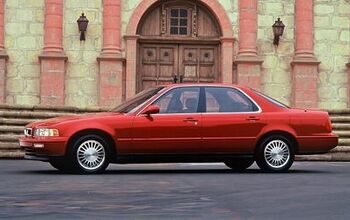
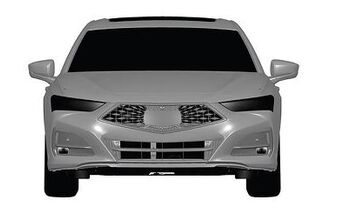
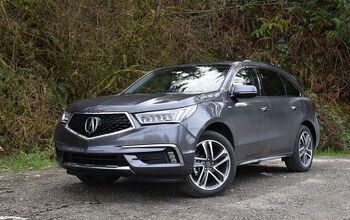

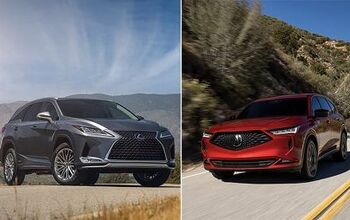

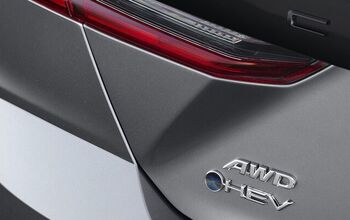
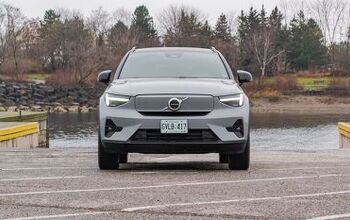
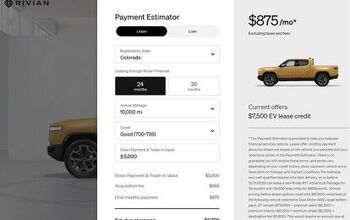

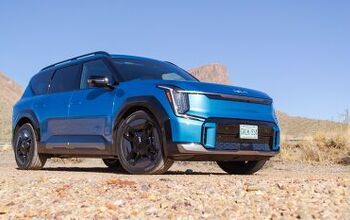



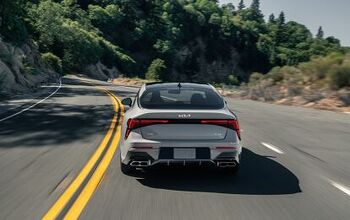
Comments
Join the conversation
Tell me whats available used